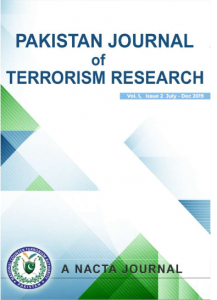Changing Dynamics of Religious Extremism: Rise of Urban Religiously Motivating Violence in Pakistan and India
Keywords:
Religious Extremism, Sectarianism, Hindutva, Secularism, RSS, Braelvi, DeobandiAbstract
Religiously motivated violence in the form of communal riots in India and sectarian violence in Pakistan has been a dominant factor inciting hate against the minorities. The new dynamics however, now being experienced is the urban youth being mobilized in the name of religion, they are otherwise relatively educated, live in cities, practice religion and professionals. These young “normal” people find motivation following their leaders and indulge in committing acts of violence against the “other”. In India, with the rise of BJP under Modi and the political space RSS Sanghis acquired has resulted in violent expression of their commitment to the cause of Hindutva. Pakistan on the other hand, while dealing militarily with the Taliban (who happen to be Deobandis) ignored the fact that more larger population of urban youth following Braelvi school of thought has managed to acquire the social and political space. This has resulted in mass mobilization by the leaders of Sunni Braelvis in the cities in the name of Prophet (PBUH). These young mobilized city dwellers proved to be extremely intolerant towards other sects and minorities. In both countries, unlike old extremists, the new extremists prefer to participate in democratic politics and yet
believe in violently convincing the other. The paper is significant to understand the changing dynamics of extremists in both countries that is weakening the democratic order of the post-colonial South Asian states. It is also important as the threat is within and unlike traditional Pakistan-India conflict, it endorses the ideological hardening which makes both the states vulnerable to ideologically driven mass mobilization of young urban extremists, thus making it extremely difficult to establish peace in the region.

